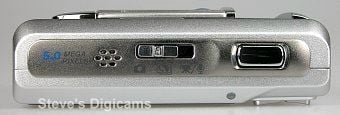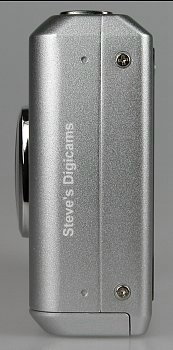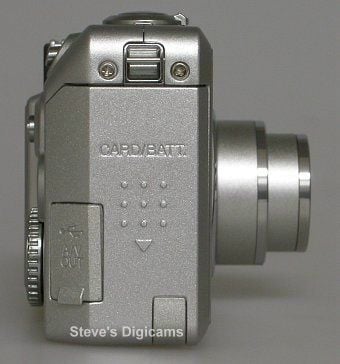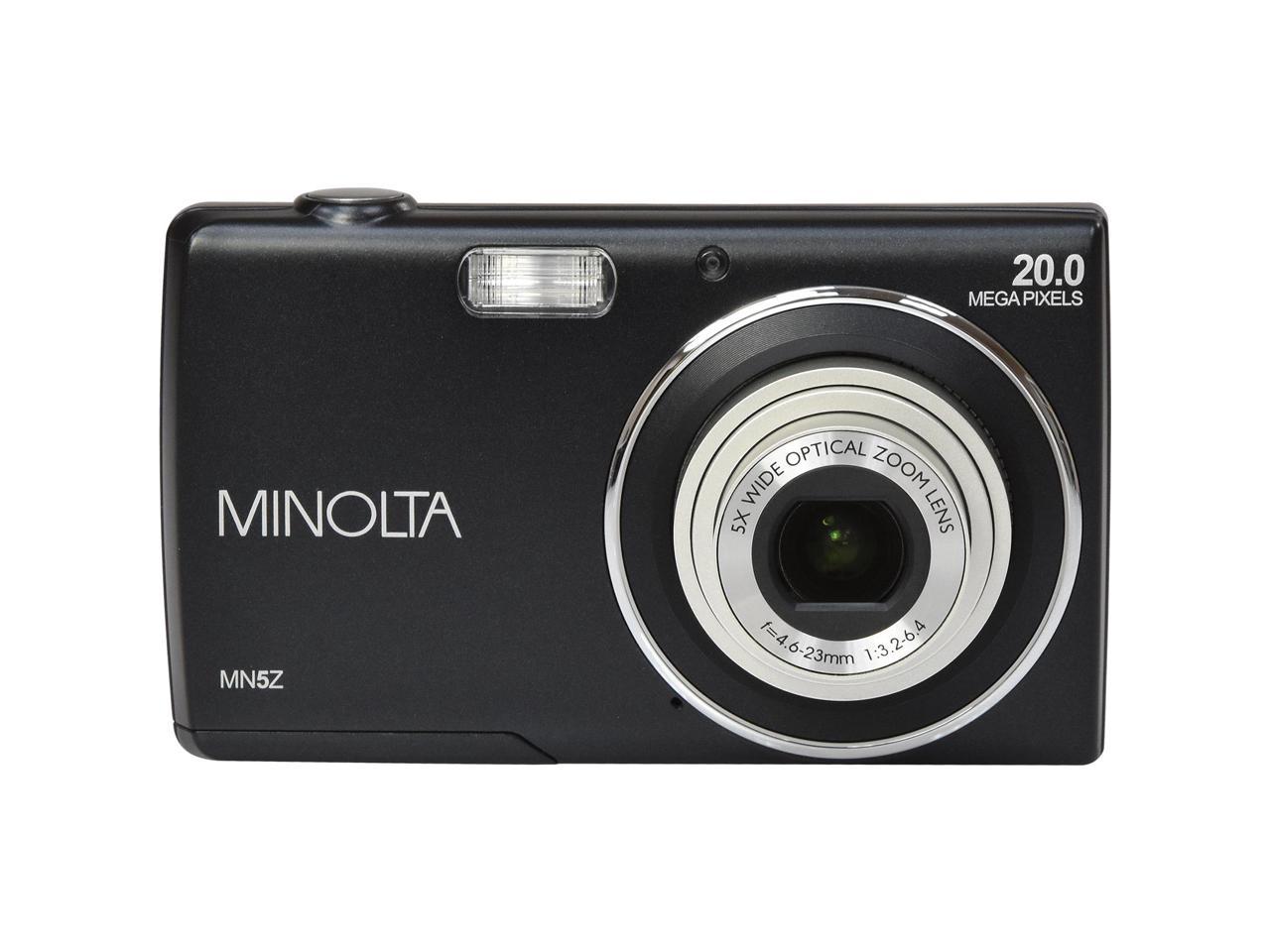

Rewind release and the battery compartment are located underneath the camera body, and there is a flat focus lever on the bottom of the lens barrel.

Film is loaded by pulling up on the release slider on the side of the camera body. Obviously it depends on the actual lens used on the SLR’s but many Minolta branded manual and auto lenses feature the 55mm filter size. I can use the same filters on this Hi-Matic 7s, Minolta SRT 202, X-700 or my beloved Maxxum 7.

One thing I love about Minolta is that many of their cameras/lenses have a 55mm filter thread whether a rangefinder or SLR. Since there isn’t an on/off switch for the meter, you’ll drain the battery if you don’t remember to place a lens cap on the lens when not in use. I’m assuming that 5.7 EV in the viewfinder is equivalent to the 5 EV setting on the lens. There is no 5.7 on the lens EV window only 5. Also, an interesting discrepancy is that the EV number range in the viewfinder goes from 5.7 – 17, yet the EV window on the lens barrel has a range of 3.7 – 18. There is a lock button on the lens barrel that must be depressed to release the camera from Automatic exposure mode. The EV window on the lens will be blank in this mode. Turn both rings to the red ‘A’ and the camera is now in fully automatic exposure mode. Hold both aperture and shutter selection rings at the same time and turn them in either direction to allow for exposure shift, i.e. Select the aperture and shutter that generates the correct EV number in the window. Next to these is a window displaying the equivalent EV number. Around the lens barrel are aperture and shutter setting rings. To perform a correct manual exposure point the camera at your subject, get the EV reading from the viewfinder. The rare Hi-Matic 7sII was also produced in 1977 which was smaller (like a Canonet) and featured a slightly faster 40mm Rokkor lens at f1.7. The camera has manual and automatic exposure modes, EV readout and parallax correction in the viewfinder, pc sync connection and self timer (V setting). Three years later (1966) the Hi-Matic 7s was released that had the same body, lens and shutter speeds, but featured a hot shoe, PC sync connection, and an improved CLC exposure system, which was also part of the popular SRT101 SLR (still in the filter ring), and a SLS (Safe Load System) indicator to monitor film transport. Among the improvements of the Hi-Matic 7 were the faster f1.8-22 45mm Rokkor, six-element lens, shutter range of ¼ second to 1/500, and a CDS meter built into the filter ring of the lens, which allowed for correct metering even when filters were placed over the lens.

Minolta went from the Hi-Matic to the Hi-Matic 7 the following year, bypassing a Hi-Matic 2 through 6. In 1962 Minolta introduced the Hi-Matic series of cameras featuring an automatic exposure system and built-in selenium meter.


 0 kommentar(er)
0 kommentar(er)
